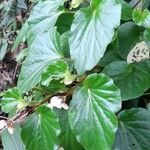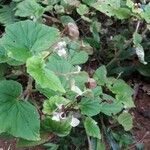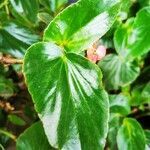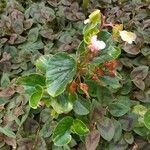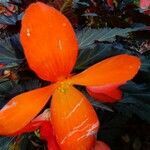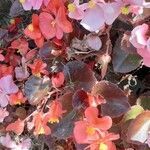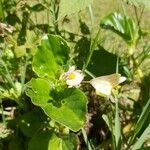A herb. It grows 1.5 m tall. The stems are fleshy. They are erect and branched. They are green to red and hairy when young. The leaves are oblique and oval and unequal on opposite sides. They are 1-14 cm long by 2-9 cm wide. They can be rolled inwards at the tip. There are teeth along the edge. The leaves are waxy green above and pale green underneath. The leaf stalks are reddish and 5 cm long. The flowers are white to pink. The fruit is an oval capsule 1 cm long.
Herbaceous perennial, caudex absent, stems erect. Leaves cucullate or hooded, leaf bases curled inwards into funnel shape, slightly asymmetrical and ovate, base rounded, apex obtuse, glabrous. Flowers white or pink.
